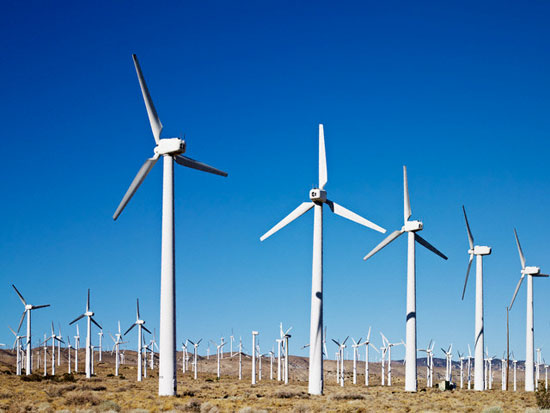Successful development of clean energy
In the first report on global clean energy, the International Energy Agency (IEA) said the world has achieved impressive success in developing clean energy technologies globally.
IEA stressed, key policy developments, public investment in research, development and deployment of clean energy technologies, including renewable energy, nuclear energy, biofuels, and energy, electric vehicles, collecting and storing CO 2 as well as the current status of deploying these energy sources worldwide. These policy support measures over the past decade have positively increased renewable energy sources.
Since 1990, the total generation capacity of renewable energy has increased by an average of 2.7% annually. At least 10 countries in the world have large-scale domestic solar market. Wind power has grown impressively in the last decade with a total global power generation capacity at the end of 2010 reaching 194 GW, more than 10 times higher than 17 GW at the end of 2000.

The IEA called on governments to actively support the deployment of power-driven or electric-powered vehicles with fossil fuels with the goal of 20 million vehicles by 2020. into use.
To achieve this goal, governments need to develop this vehicle market sustainably in the next 10 years with incentives for selling prices, supporting the construction of appropriate electric energy charging infrastructure, research funding. and developing, cooperating to develop national, regional and urban transport systems and education programs to raise consumers' awareness.
However, the IEA report also emphasized the need for soaring fossil fuels over the years has cast a shadow on impressive successes in the development of clean energy technology . The IEA calls on governments to implement a more dynamic clean energy policy, completely eliminate all fossil energy subsidies, and implement policies to encourage greater transparency in clean energy.
The IEA's Richard Jones, deputy director of the IEA, warned that the world's dependence on fossil fuels is threatening the sustainability of the environment, while creating short-term risks of political instability. Switching to low-emissions energy sources and improving energy efficiency must be the world's highest priority for energy use.
In order to meet the target of reducing carbon dioxide emissions by 50% in global energy consumption by 2050, the IEA study confirmed that in addition to promoting clean energy development, the world needs to develop collection and survival technologies. CO 2 emissions.
According to IEA calculations, the world now has five large-scale projects related to the technology, but will need 100 such projects by 2020 and 3,000 projects by 2050.
- Clean energy future for Cuba
- Successful invention of a clean electric furnace
- Vietnam won the Global Energy Award
- Modern energy may be universal by 2030
- India announced the successful development of artificial blood
- The world needs to accelerate the application of clean energy
- Energy Observer - 'Laboratory' of floating energy throughout the world
- Exploiting endless energy sources
- The most surreal alternative energy sources in human history
- Denmark is at the forefront of producing clean energy
- Renewable energy is enough to provide 1/4 of the world's electricity demand
- China is at the forefront of clean energy use
 Vietnam 5th Asian champion on fuel-efficient vehicles
Vietnam 5th Asian champion on fuel-efficient vehicles We can read all NASA studies completely free of charge
We can read all NASA studies completely free of charge Singer and songwriter Bob Dylan won the 2016 Nobel Prize for Literature
Singer and songwriter Bob Dylan won the 2016 Nobel Prize for Literature Scientific revolution in Asia
Scientific revolution in Asia